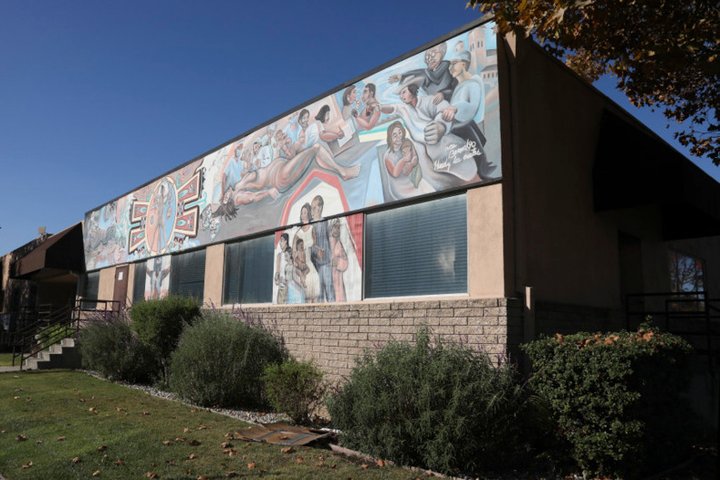
Patient visits at the Gardner Health Center in San Jose, Calif., have dropped nearly 60%. Photo Karl Mondon, Bay Area News Group
###
Community health clinics that serve some of the region’s most vulnerable residents are struggling with how to keep their doors open while patient visits plummet during the coronavirus shelter-in-place mandate.
Statewide, patient visits are down by roughly half across California’s network of community clinics and health centers, leading to tens of millions in lost revenue each week.
Many local health clinics that primarily serve low-income residents and rely on Medicaid reimbursements to make up a large portion of their income. So the dramatic reductions in patient visits threaten their ability to stay open and care for the kinds of patients who are at a heightened risk of contracting the virus.
Experts say the Bay Area, which has been in lockdown longer than anywhere else in the nation, has been particularly affected, with some already instituting furloughs or layoffs.
“The Bay Area clinics are hard-hit,’ says Carmela Castellano-Garcia, president and chief executive officer of the California Primary Care Association.
There are about 1,300 community clinics and health centers (CCHCs) across California serving more than 7 million patients annually — nearly one-sixth of the state’s population. Many provide care to residents particularly at-risk of contracting the virus or uniquely vulnerable to it. Community health centers serve roughly 1 in every 3 MediCal recipients, and in 2019 worked with 486,628 migrant workers and 246,268 homeless residents, according to CPCA.
With patient visits down, Castellano-Garcia says California’s community clinics are collectively losing about $90 million a week. Up to 77 health centers statewide may not be able to make payroll within 90 days if the current trends persist.
“It is not sustainable,” she says.
In the South Bay, patient visits at Gardner Health Services, which works in Santa Clara and San Mateo Counties, have dropped nearly 60%, says Chief Operating Officer Efrain Coria, prompting financial losses of about $1 million a month. Gardner has reduced its workforce by about 22%, Coria says, and laid off 135 staff members, though he emphasizes he hopes to re-hire many of them in the coming months when and if things calm down.
In the East Bay, La Clínica de La Raza, which serves about 90,000 patients annually in clinics throughout Contra Costa, Alameda and Solano Counties, has seen in-person visits drop about 30% since the start of the pandemic, says chief executive officer Jane Garcia, resulting in financial losses of about $3 million over the past month. About 300 employees have been furloughed.
However, La Clinica’s health centers have seen some gains since the state eased some restrictions for telehealth services, allowing patients to connect with health providers electronically. Those visits are also billable to Medicaid.
“If that option had not been authorized, it would have shut us down,” Garcia says. “And you would have seen [our patients] in emergency rooms and hospitals, or they wouldn’t have gone in at all.”
Marc Gannon, chief operating officer of Fremont’s Tri-City Health Center, which serves about 26,000 patients in Fremont, Hayward, Union City, Newark, and San Leandro — 37 % of whom are on MediCal or uninsured and the majority of whom live below 200% of the federal poverty level — says the organization changed its business model “essentially overnight” from in-person visits to telehealth appointments.
But the clinic is still suffering declines in revenue. In-patient visits have decreased by about 35% since the start of the pandemic and Gannon says they are considering reducing staffing to manage the financial hit.
“This is financially a very difficult time, there is no way of sugarcoating this,” says Gannon. “We are analyzing sustainability on a day to day basis.”
Amid the financial challenges, Tri-City health care workers are still trying to check in with patients by phone, providing resources from MediCal and other safety net services that they may be eligible for or with behavioral health services for people struggling with isolation and loneliness due to shelter-in-place orders. Last week, they reached 3,000 of the network’s 26,000 patients.
The federal government recently granted the nation’s federally funded community health centers a reprieve, awarding $1.32 billion to health centers nationwide. But many say that’s not enough to cover their losses. The $1.3 million the South Bay’s Gardner Health Services expects to receive, which is supposed to cover a 12-month period, would last between five and six weeks, Coria says.
Still, Bay Area community health centers want to make sure that people know their doors — virtually and physically — are still open to people who need care.
“Community health centers are adaptive, resilient, and have been around for a very long time,” says Gannon. “We are going to survive this.”
###
Erica Hellerstein is a journalist with the Mercury News. This article is part of The California Divide, a collaboration among newsrooms examining income inequity and economic survival in California. CALmatters.org is a nonprofit, nonpartisan media venture explaining California policies and politics.
CLICK TO MANAGE